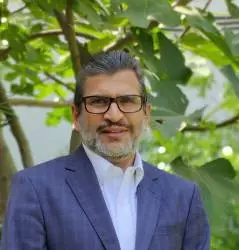
Agendra Kumar has been associated with Esri India since 2013. An industry veteran with over three decades of experience in the IT industry, Agendra has been promoting the use of geospatial technologies in the country. Under his leadership, Esri India has partnered with various government and private organizations to execute critical and transformative projects using Esri’s GIS (Geographic Information System) technology and here is where we come in to discuss the use and future of GIS in India
Agendra is also the President of the Association of Geospatial Industries (AGI). Before joining Esri India, Agendra was the Managing Director of Silicon Graphics in India and prior to that he was the Managing Director of Veritas India and upon its merger with Symantec Corporation took on global account management responsibilities for Asia Pacific and Japan region.
Q1. Since 70% of Esri India’s clients are government, how are you helping government in better decision making? Please mention some names/ use cases.
Agendra || Government departments – at centre, state and municipal (ULB) level have been using GIS for many decades. What started with simple GIS applications, with limited access across specialized departments only, has today matured to advanced geo-enabled decision support systems that power major mission programssuch as Digital India, Smart Cities, Sagarmala, Bharatmala and Namami Gange, e-governance initiatives, sustainability goals and policy decisions.
National mapping organizations such as Survey of India (SOI), Geological Survey of India (GSI), National Atlas and Thematic Mapping Organisation (NATMO), Registrar General of India (RGI), Forest Survey of India (FSI) and NIC today use Esri ArcGIS for enterprise production mapping.
More than 40 smart cities are using Esri ArcGIS for planning, implementation and maintenance of urban areas, mobility solutions, utilities, asset management and improvement in their financial resources. For example: Varanasi Smart City has integrated IoT and sensors for dealing with issues of waste collection, parking management, automated street lighting etc. and to capitalize on the real-time location intelligence for enhanced decision-support system, improved collaboration, and rapid emergency response.
GIS technology is extensively used by government agencies to map and analyse various environmental changes like rising sea levels, land, and forest cover, changing habitats, etc. Several organizations under The Ministry of Environment and Forests, and many state forest departments are leveraging Esri ArcGIS to improve forest management with our solutions for data collection, mapping analytics, and remote sensing.

In disaster management, the use of GIS forms the core of all decisions from preparedness to recovery – identifying likely areas to be affected, evacuation planning, shelters, rehabilitation plans and more. Recently, before Cyclone Yaas made itslandfall on the eastern coast of India, a live GIS-enabled map application, released by us with our cloud offering – ArcGIS Online, provided critical information like movement of cyclone, likely path and expected wind speed etc.
More than 200,000 people downloaded this map within two days, making it one of the most used GIS based app in recent times. 80+ agencies including smart cities (e.g., Varanasi), municipal corporations (e.g., GMDA, BBMP, MCGM), state departments (e.g., Haryana, Punjab, Rajasthan), NGOs and national agencies (e.g., NDMA) leveraged Esri’s GIS technology for understanding the spread of pandemic, making critical decisions, taking actions and observing the impact of the actions taken.
Q2. How GIS can help in ensuring effective e-governance, enabling government to provide a new level of service to both businesses and the public?
Agendra || Government departments at all levels capture and maintain various data (such as assets available, programs / projects / initiatives, about citizen and services being offered) which form the basis for variety of decision making such as public-private partnership initiatives, financial inclusion, citizen inclusion, property taxation,infrastructure,and urban development, and delivering citizen services.
The city of Kanpur has implemented ArcGIS based property tax collection system and has seen an increase in compliance and tax collections.States such as Rajasthan, Jharkhand, and Karnataka have implemented geospatial infrastructure at state level which powers many of their governance programs. Rajasthan Government has also created an app using GIS to provide benefits to citizens and avoid duplication while extending government aid or other facilities to them. Here, GIS enabled a fair implementation of government services and distribution of benefits at the family level too.




